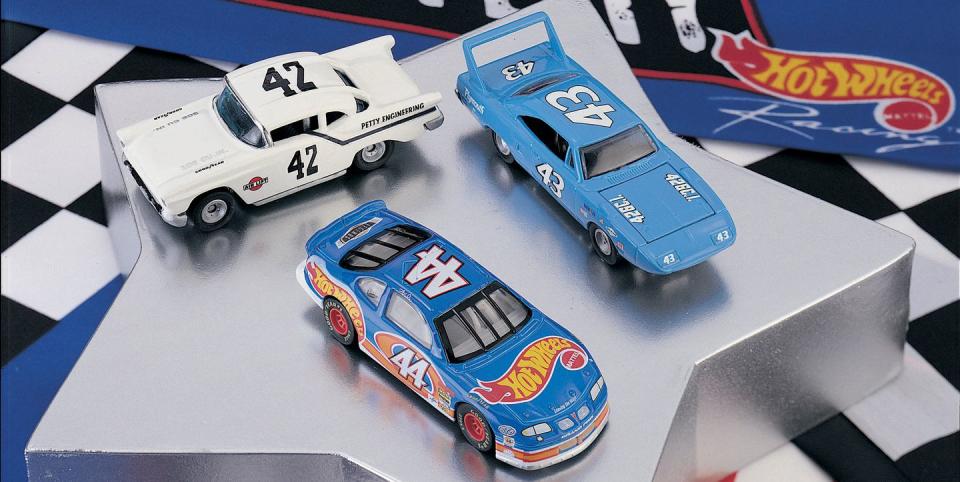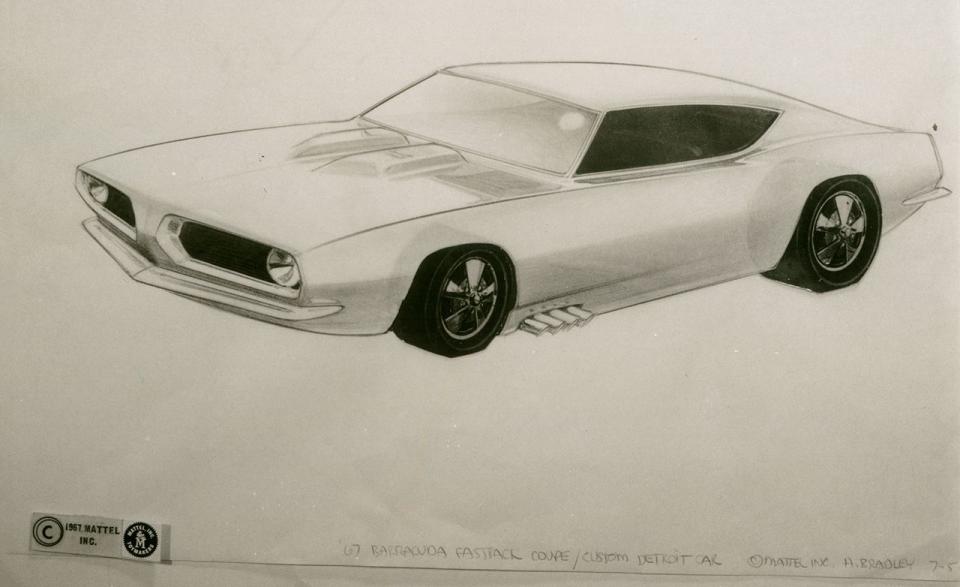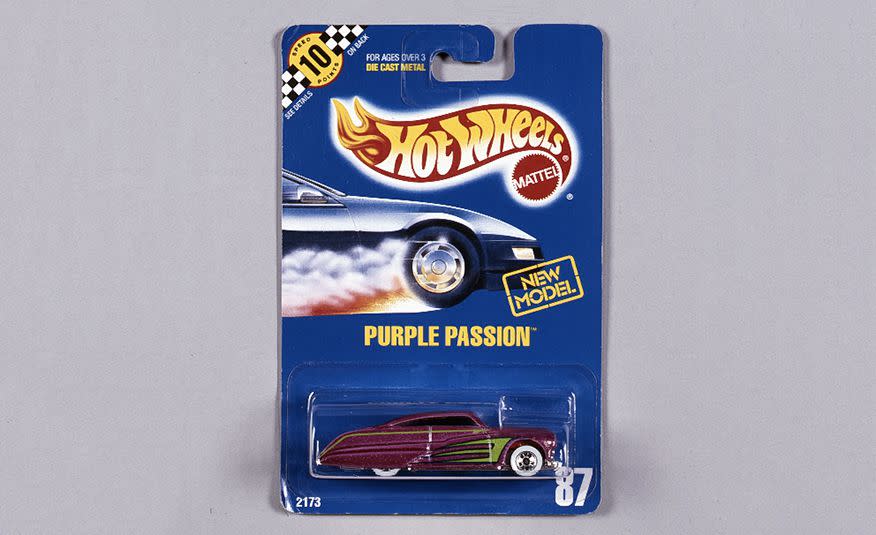Hot Wheels Turns 50: Here’s How Design Drives the Iconic Toys

The legend of how one of the most successful toys in the world got its name goes like this: When a product team went into the office of Mattel co-founder Elliot Handler in 1968 and rolled a prototype toy car across his desk, the executive responded with, “Those are some hot wheels!”
Fast forward to this month, and Hot Wheels is celebrating a half-century of existence. The brand has produced more than six billion of the little vehicles, which range from faithful replicas to far more fanciful creations. With licensing in place with movie studios and just about every automaker on the planet, Mattel now produces 519 million Hot Wheels toys per year. That equates to about 10 million Hot Wheels cars and trucks rolling out per week, or about 16.5 each second. Snap your fingers to a beat and imagine each one signaling another batch of die-cast vehicles rolling off an assembly line in Malaysia.
For all that history, little has changed about the basic toy itself. It still consists of a metal body over a lightweight base with straight axles and tiny plastic wheels. While more expensive and larger versions have rubber wheels and more intricate elements, this essential formula of Hot Wheels cars has remained the same, even as vast amounts of designs have been produced over the past 50 years. That variety has been key in keeping the toy interesting and fresh to generations of kids and collectors. Some 25,000 different variations of Hot Wheels cars now exist, and more than 130 new designs are introduced each year.
Chris Down, Hot Wheels’ global brand general manager, said the cars were originally intended to be a more aggressive-looking, higher-performing alternative to what the existing 1:64-scale toy-car manufacturer, Matchbox, was offering at the time. The driving idea was that Hot Wheels cars not only had to look exciting, they also had to be exciting.
This simple proposition enticed more than a few designers of full-size actual cars to try their hand at penning Hot Wheels. It began with Harry Bentley Bradley, who joined the company from General Motors and designed 11 of the company’s legendary “Original 16” models. Designers from Ford and Chrysler would soon join the team, too. Down said auto-industry designers continue to be drawn to Hot Wheels because, in many cases, they can actually design an entire “car,” whereas at big carmakers many designers can be relegated to smaller portions of the whole, especially at the beginning of their careers. “You’re a talented designer who has dreamed of designing cars and you’re designing door handles instead,” Down said. He added, “The dream of the designer can come true at Hot Wheels.”
Every toy begins with a sketch, said Jun Imai, Hot Wheels’ head of design. This is true of original creations like the Bone Shaker and Twin Mill as well as the vehicles licensed from automakers. Designers are confined to a standard set of dimensions, which can be difficult to replicate at 1:64 scale. But for original designs, the team has a quite a bit more leeway. “We kind of just let our imaginations let loose,” Imai said.
Once they have a draft ready of what a Hot Wheels car will look like, Imai said, the real change begins: making sure it can perform. The cars can’t just be cool-looking-attributes such as wheelbase and weight distribution have to ensure the cars can race down the signature Hot Wheels plastic orange track. (Incidentally, Hot Wheels today produces 6000 miles of that orange track per year. That’s enough to stretch from Fairbanks, Alaska, to Cancún, Mexico, and still have a few hundred miles of track to spare.)
For testing, the design facility has a two-lane, 50-foot-long drag strip and gravity track with a built-in timer, as well as pickup points that measure the speed and velocity of the cars. “We’re not designing cars to be toys; we’re designing them to be real cars,” Imai said.
Of late, three-dimensional printing has become a critical part of the Hot Wheels carmaking process. Imai said his design team can send a file to the 3D-printing team and have a prototype in designers’ hands within an hour. Later, files are sent to the company’s production teams in Asia to test the cars for manufacturing tolerances. “Usually there aren’t any surprises,” Imai said.
Eventually, the finished product appears in stores. “I’ve been here for 14 years, and I still get a kick out of it when I see one of the cars that I worked on,” Imai said. But even better than that is seeing the little vehicles in the hands of Hot Wheels’ most honest customers: kids, who usually don’t mince words in voicing whether they like a design or not. “They’re super honest,” he said.
According to Hot Wheels, the average kid in the United States owns about 50 of its cars. This high volume, coupled with the fact that they are sold for as little as $1 each, means that most models are not especially lucrative collector’s items. However, there are rarities, limited editions, and prototypes that have plenty of value, and which form the core of a vital and thriving collector community. The most valuable Hot Wheels is an extremely rare pink 1969 prototype version of a Volkswagen Microbus called Beach Bomb that has sold for $72,000 and was appraised last year on Antiques Roadshow at $100,000 to $150,000. That’s not Picasso-level stuff, but it’s a nice haul considering what the production toys usually sell for.
The wide range of models is one reason Mattel claims Hot Wheels to be the top-selling toy by volume in the world. “We have such a range for every single taste and every single age,” Down said. “And the way that we put the product in the market, we always ensure there’s a great variety on the shelf.”
You Might Also Like

 Yahoo Autos
Yahoo Autos 


